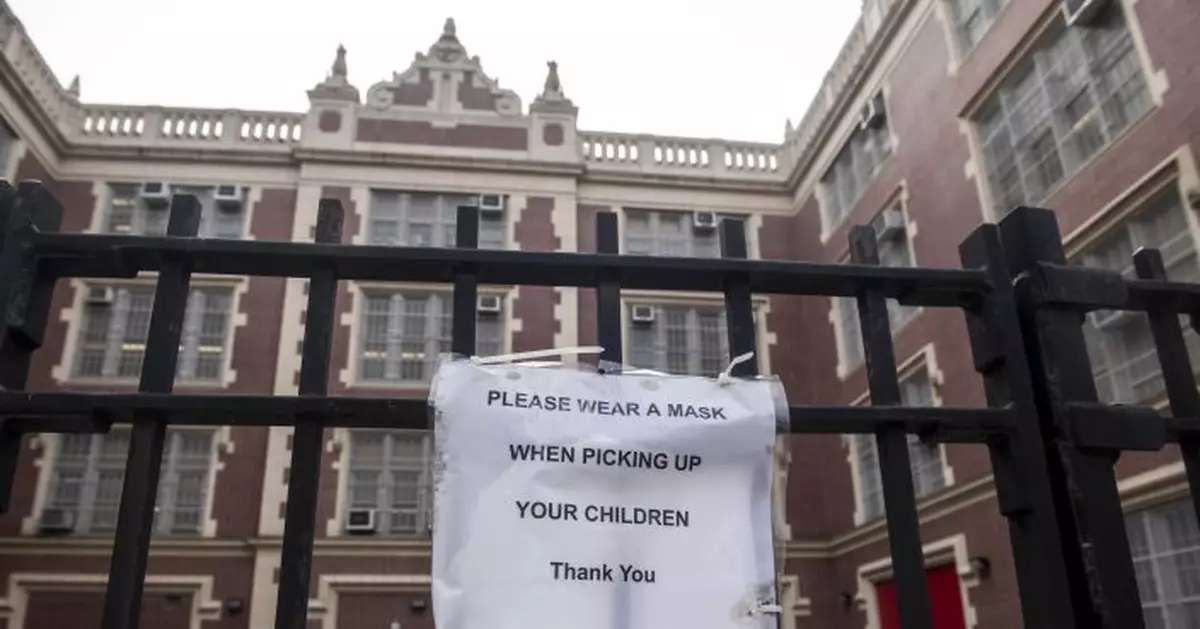Kathryn Malara, a Brooklyn teacher, lingered on a street Tuesday, filled with dread about going to her job.
“I'm sitting in my car terrified to walk into school,” she wrote on Twitter just before taking a deep breath and heading to her classroom. “Cases exploding. People I really care about are sick & frightened.”
The quick spread of the omicron variant of the coronavirus has stirred another angst-ridden reckoning about whether in-person schooling is worth the risk. Malara and other teachers worry about endangering their health by entering crowded schools. Frustrated parents wonder how to keep their children safe and whether campuses could become superspreader sites.
“It’s creeping back up again, and I don’t like this. I’m worried. Lives are at stake here — not just my son’s life,” said Starita Ansari, a public school parent in Manhattan who is keeping her 10th grader home after being rattled by the latest infections at his school.
Scientists say omicron spreads more easily than other coronavirus strains, including delta, though many details about it remain unknown, including whether it causes more or less severe illness. But even if it is milder, the new variant could still upend schooling and overwhelm health systems because of the sheer number of infections.
As of Thursday, nearly 7.4 million children in the United States had been infected since the start of the pandemic, representing 17.3% of all cases, according to data gathered by the American Academy of Pediatrics and the Children’s Hospital Association.
Of those, almost 170,000 cases were reported over the last seven days of the tally.
On Monday, a fifth of New York City’s public school students skipped in-person classes, an indication of the anxiety spawned by the resurgence of COVID-19 cases in New York state, which in recent days has broken infection records.
Most schools across the country are keeping classrooms open, despite the new threat from omicron, but some school districts have moved to limit in-person instruction as a precaution.
On Friday, one of the largest school districts on the East Coast, the Prince George’s County district in Maryland, said it would cancel in-person instruction in favor of virtual classes because of rising COVID-19 cases at its campuses.
Schools in Mount Vernon, New York, and elsewhere also reverted back to virtual instruction.
“There is great concern because we had been doing so well,” said Daniel A. Domenech, executive director of the American Association of School Administrators.
“Just about a month ago, we had about 98 percent of the students in this country attending school in person, and omicron has brought about just a huge reversal in that process. And all of a sudden we’re seeing infection rates skyrocket,” he said, “It’s affecting children much more than previous variants, so children are getting sick. Staff is getting sick, and it’s just a spread that’s alarming.”
Back in New York, Liz Rosenberg had already decided to keep her two children, 17 and 11, home from the final days of school before the holidays. It was still unclear if they would return to the classroom when in-person instruction reconvenes in the new year.
“The messaging that we’re basically getting from lots of places right now is that getting COVID is inevitable. And I just can’t participate in that. Why would I send my kids to school knowing that that in their own buildings, cases have risen quite a bit?” Rosenberg said.
New York Gov. Kathy Hochul has vowed to keep schools open.
“We believe that it’s critically important that our children not end up in that same situation they were for so many months, when they were so displaced from their normal environment,” Hochul said Monday.
The governor said the state would provide 2 million test kits for schools, which would then distribute the tests to children to take home.


